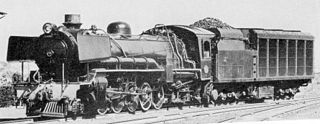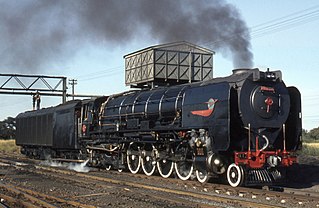
The South African Railways Class 25NC 4-8-4 of 1953 was a steam locomotive.

The South African Railways Class 21 2-10-4 of 1937 was a steam locomotive.

The South African Railways Class 18 2-10-2 of 1927 was a steam locomotive.
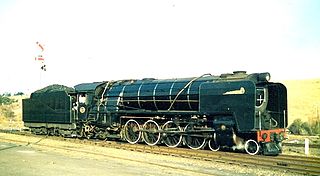
The South African Railways Class 15E 4-8-2 of 1935 was a steam locomotive.

South African steam locomotive tenders were classified by means of type letters and sometimes numbers, while locomotive specifications included a list of permissible tenders which could be used with each engine class.
The South African type LP tender was a steam locomotive tender.

The South African type KT tender was a steam locomotive tender.

The South African type HT tender was a steam locomotive tender.
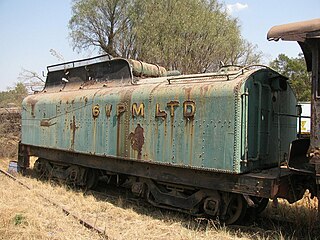
The South African type GT tender was a steam locomotive tender.
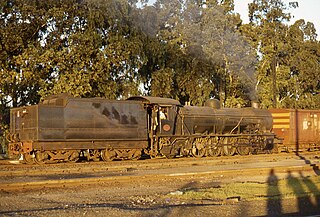
The South African type MT1 tender was a steam locomotive tender.

The South African type FT tender was a steam locomotive tender.

The South African type JV tender was a steam locomotive tender.
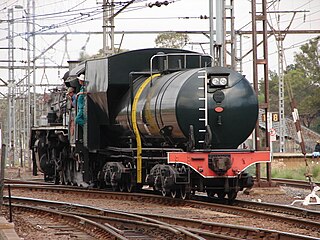
The South African type MX tender was a steam locomotive tender.
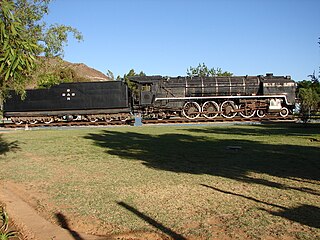
The South African type EW tender was a steam locomotive tender.
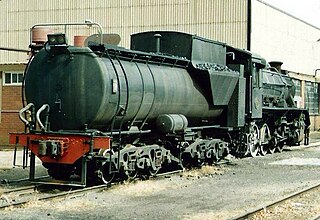
The South African type MY1 tender was a steam locomotive tender.

The South African type CZ tender was a condensing steam locomotive tender.

The South African type EW2 tender was a steam locomotive tender.

The South African type EW1 tender was a steam locomotive tender.
